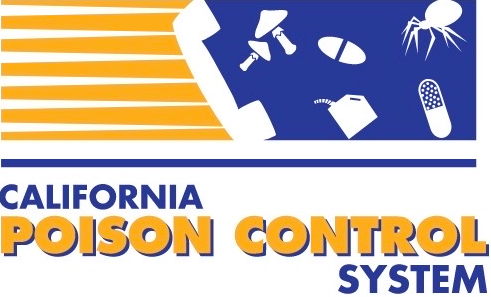Updated January, 2023 by Nathan A Friedman, MD & Alicia Minns, MD
Original author Alicia Minns, MD
Introduction
In the early 2000s, a dramatic surge of case reports of use and complications from Krokodil (also known as Crocodile, Krok, or Croc) emerged. Krokodil use was first reported in Siberia in 2002 and has mostly been described in European countries. The drug made its way into the United States with a few cases reported in the late 2000s, although reports in the medical literature have largely tapered off since the mid 2010s. No confirmed cases have been reported in the U.S. since at least 2014. During a period of media attention, it was dubbed the “drug that eats junkies,” and “Russia’s deadly designer drug.” It is characterized as the “flesh eating” or “flesh rotting” drug. The main active ingredient of Krokodil is desomorphine, a more potent and synthetic derivative of morphine. It can be manufactured at home from codeine and easily obtained additives and is significantly cheaper than heroin. Its use results in severe damage to the vasculature, muscles, and bones, and in multiorgan failure with a mean survival time of 2 years after its first use. Use of this drug spread across Eastern Europe because of its low cost and higher addictive potential. Desomorphine is commonly called krokodil, which potentially refers both to chlorocodide, a codeine-derived precursor, and to the excessive gross desquamation from gangrenous inflammation at the injection site that resembles scales of a crocodile. The use of desomorphine is prohibited internationally and has no accepted medical uses. It is a scheduled I drug under the United States Code Controlled Substance Act.
In 2012, Russia placed substantial restrictions on the purchase of codeine-containing medications, leading to a rapid decline in reported Krokodil cases.
Case presentation
A 25-year old female presented to the Emergency Department with a week of pain, swelling, and ulceration to her right thigh. She normally used heroin daily, however due to a recent job loss, she was forced to obtain cheaper homemade heroin substitutes from the Internet. She reported injecting a drug called “Krokodil” for the past several months which she purchased from a Russian vendor. She initially developed blistering of the area, which had progressed to painful necrotic ulcers. On exam, her temperature was 101°F, heart rate 125 beats per minute, blood pressure 115/60 mmHg. Her right anterior thigh was swollen, with erythema and several large necrotic ulcerations. She was admitted to the hospital and treated with intravenous antibiotics and wound care, however left the hospital against medical advice and was lost to follow up.
Questions
- How is Krokodil made?
- Why is Krokodil more addictive than morphine?
- What dermatological condition can Krokodil lesions mimic?
Epidemiology
Desomorphine first emerged in the Russian drug scene around 2002-2003 under the term Krokodil. At that time, there was a decreased import of Afghan heroin into local drug markets and a tendency back to the production of homemade drugs. An increase in the number of Krokodil users was then observed, which was thought to be a result of the easy availability of codeine in Russia. Many Krokodil users claim to be former heroin users who switched due to scarcity. In early 2011, 65 million doses of desomorphine were seized in Russia. In June 2012, Russia restricted the sale of codeine-containing tablets, which are the chemical bases for the home production of desomorphine, to prescription only. In late 2011, Krokodil use in Germany was reported with devastating dermatologic lesions typical of Krokodil use. Due to the high dependence potential and the toxicity of Krokodil, the mean survival time after first use is reported to be 2 years. Currently, Russia and Ukraine seem to be the countries most affected by Krokodil, however Georgia, Germany, Kazakhstan, Czech Republic, France, Belgium, Sweden, Norway as well as the USA have reported Krokodil use and related injuries. Overall, reports of use have dropped precipitously since the codeine restrictions and the cheap availability of alternatives such as fentanyl. The victims of Krokodil are usually young people between ages 18 and 25.
Pathophysiology and pharmacokinetics
Desomorphine is an opioid analgesic that was first synthesized in the United States in 1932. It was originally synthesized with the intention of creating an alternative to morphine with an improved side effect profile. However, desomorphine showed increased dependence potential compared to morphine. It was briefly marketed in Switzerland in 1940 by Hoffman-LaRoche under the trade name of Permonid® as a post-operative analgesic. It was found to exhibit a faster onset and shorter duration of action than morphine, with less nausea and respiratory depression. It is a potent mu-opioid agonist, with less activity on kappa- and delta-receptors. It is almost entirely free from the emetic effects that morphine has. The lack of an alcoholic hydroxyl group renders desomorphine more lipophilic than morphine, leading to increased distribution in the brain and about 8-10 times higher analgesic potency. Desomorphine also has a faster onset of action, and shorter half-life compared with morphine. Due to this short elimination half-life, patients with desomorphine dependence inject more frequently than those with heroin dependence.
The simple and cheap domestic production process involves boiling a large quantity of codeine with household organic solvents, gasoline, hydrochloric acid, iodine, and red phosphorous (which is scraped from the striking surfaces on matchboxes). In this process, desomorphine is generated from codeine (3-methylmorphine) via two intermediate steps (alpha-chlorocodide and desocodeine). The process takes 10-45 minutes. The final product is a suspension that contains desomorphine as the psychoactive core, along with multiple byproducts produced during manufacture. There are various primary substances that can be used for the synthesis of Krokodil, so the chemical composition likely varies between users. The desomorphine content of Krokodil samples may range from trace to 75%. The suspension is used intravenously without using any filter, perhaps accounting for the tissue damage that occurs. Sometimes a weak base, such as cigarette ash or bicarbonate is added after the reaction is complete, however this is insufficient to raise the pH over 3.
Clinical presentation
Repeated administration of desomorphine can cause physical and psychological dependency, tolerance and a withdrawal syndrome if the substance is no longer used, similar to heroin. Other effects are similar to those of opiates such as miosis, flushing, constipation, urinary retention, nausea, vomiting, sedation and respiratory depression. Unlike heroin, due to the high degree of contamination with various toxic byproducts, injection of Krokodil can cause immediate tissue damage to blood vessels, muscle and bone via unclear mechanisms. Multisystem organ dysfunction can occur including thyroid (due to iodine) and cartilage (due to phosphorus). Heavy metal poisoning can also occur with chronic use. Abscess formation, thrombophlebitis, gangrene, necrosis and autoamputation are frequently reported. Skin sloughs off at the injection site, often exposing the bone below. The ill effects of Krokodil are not limited to localized injuries and include pneumonia, sepsis, meningitis, osteomyelitis and osteonecrosis, neurologic injury (such motor and memory impairment), ulceration and tissue damage at sites distant from the injection site, liver injury, renal impairment and death. There is a paucity of information in the medical literature and current information comes mostly from mass media. These complications occur shortly after Krokodil is injected. Additionally, practices common to homemade drug production are known to potentiate blood-borne virus transmission such as HIV and hepatitis C. Jaw osteonecrosis, which is resistant to medical treatment, can develop in the maxillofacial region in users due to red phosphorus contamination.
Diagnosis
Because of the high degree of contamination with different toxic chemicals, which vary among users, scientific analysis of the chemical composition is not available. Desomorphine can be detected in blood samples within a couple of hours and in urine samples within 2-3 days after Krokodil administration. Routine testing in the acute clinical setting is not typically available. Diagnosis is therefore based on the history provided by the patient as well as the clinical presentation. Soon after use, patients will present with a physical exam consistent with other opioids ingestions/injection. Although extensive tissue damage is typically described, this can also be seen in patients who develop skin and soft tissue infections from heroin use. In the absence of injection drug use history, the skin lesions may resemble advanced pyoderma gangrenosum, and has been mistaken for this entity in some reports. Pyoderma gangrenosum characteristically responds to corticosteroids, whereas Krokodil lesions will not improve with such therapy. In chronic Krokodil users, it may be worthwhile screening for heavy metal poisoning given the contamination during the manufacture process.
Treatment
In the few remaining regions where Krokodil use continues, poor access to proper health care may exacerbate the described complications. Medical help is reportedly only sought after during the late stages of tissue injury and may end with severe mutilation, amputation and death. If someone seeks care, extensive wound care and IV antibiotics is typically indicated. In many cases, amputation is the only solution. Existing reports have emphasized the high potency of desomorphine and the need for frequent redosing, resulting in binge patterns that can last over days. During these binges, sleep deprivation, poor hygiene, and malnutrition places users at risk for further complications. Variations in potency of desomorphine places users at increased risk of overdose. Treatment must consider not only the local tissue destruction that occurs, but also the distant tissue injury and multi-system organ damage that can occur. In the setting of respiratory depression, naloxone (0.4-2mg IV; repeat every 2-3 minutes until desired effect is achieved) can be administered.
Question and answers
- How is Krokodil made? The simple and cheap domestic production process involves boiling 80-400mg of codeine with a diluting agent (mostly paint thinner that may contain lead, zinc or ferrous agents), gasoline, hydrochloric acid, iodine, and red phosphorous (which is scraped from the striking surfaces on matchboxes). In this process, desomorphine is generated from codeine (3-methylmorphine) via two intermediate steps (alpha-chlorocodide and desocodeine). The process takes 10-45 minutes. The final product is a suspension that contains desomorphine as the psychoactive core, along with all other agents involved in the production process.
- Why is Krokodil more addictive than morphine? Its chemical structure renders desomorphine more lipophilic than morphine favoring penetration in the brain leading to a higher analgesic potency. It has 8 to 10 times higher analgesic potency, faster onset of action, and shorter half-life compared with morphine, which accounts for its increased addictive potential.
- What dermatological condition can Krokodil lesions mimic? Krokodil skin manifestations may resemble pyoderma gangrenosum but not respond to therapy with corticosteroids.



